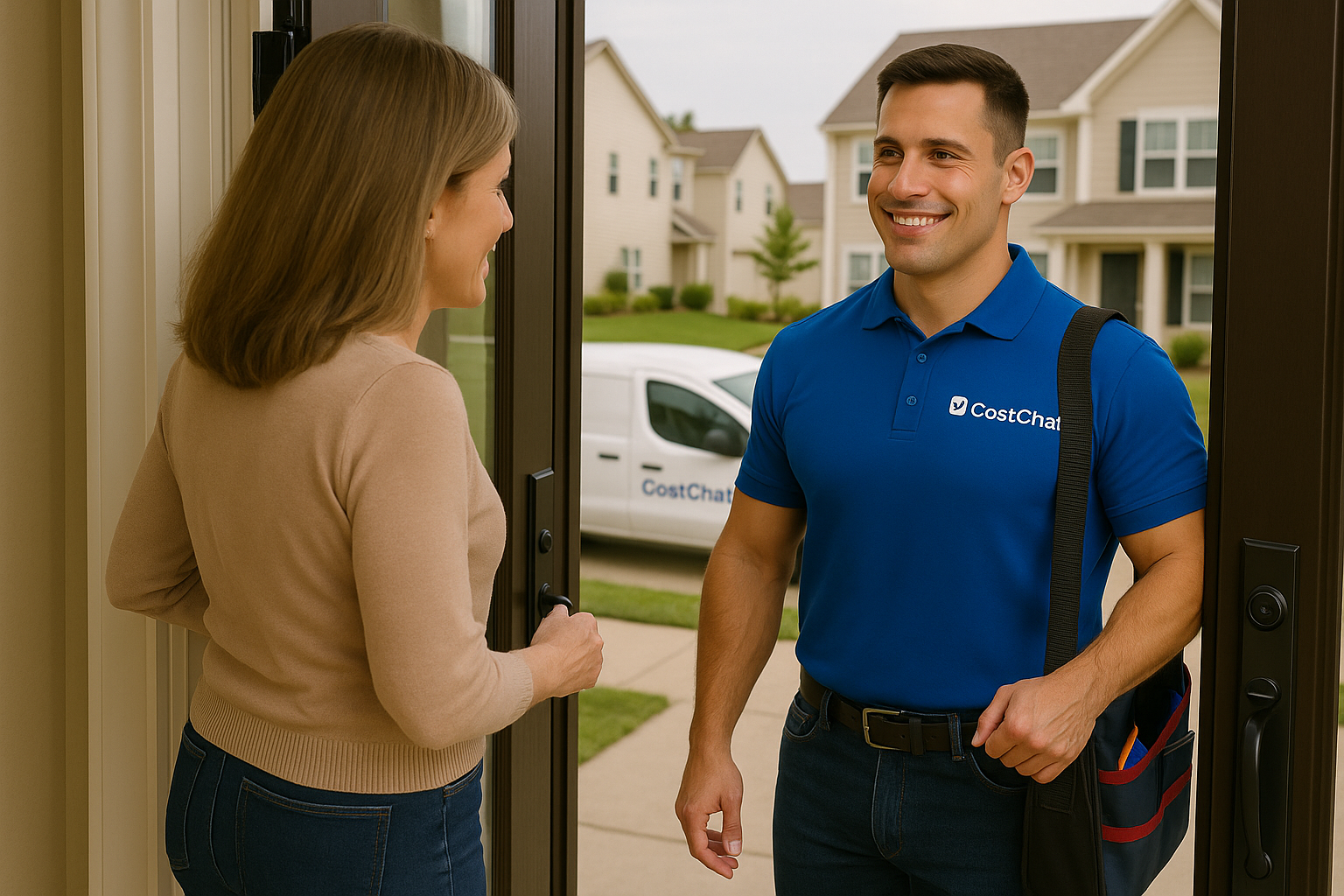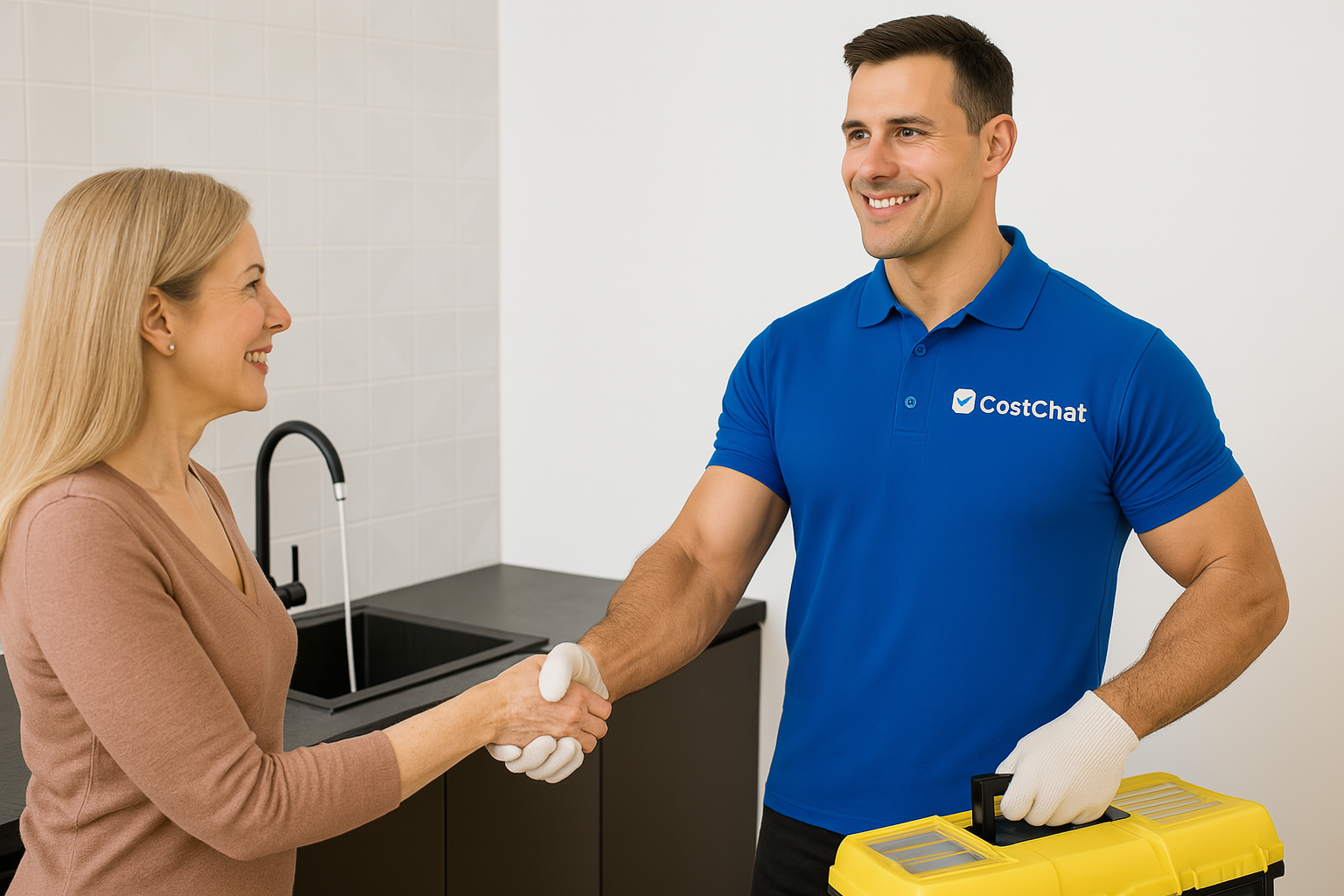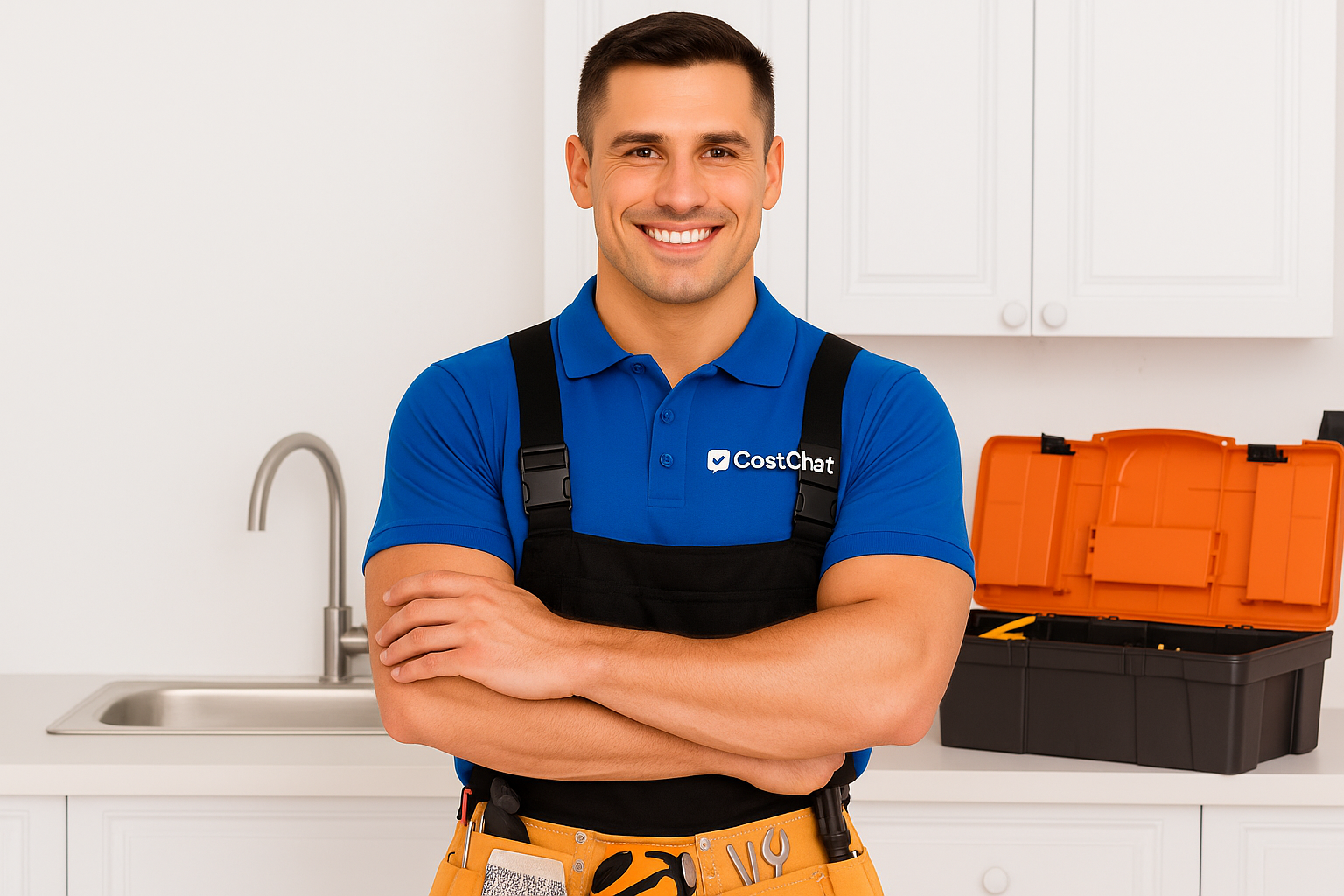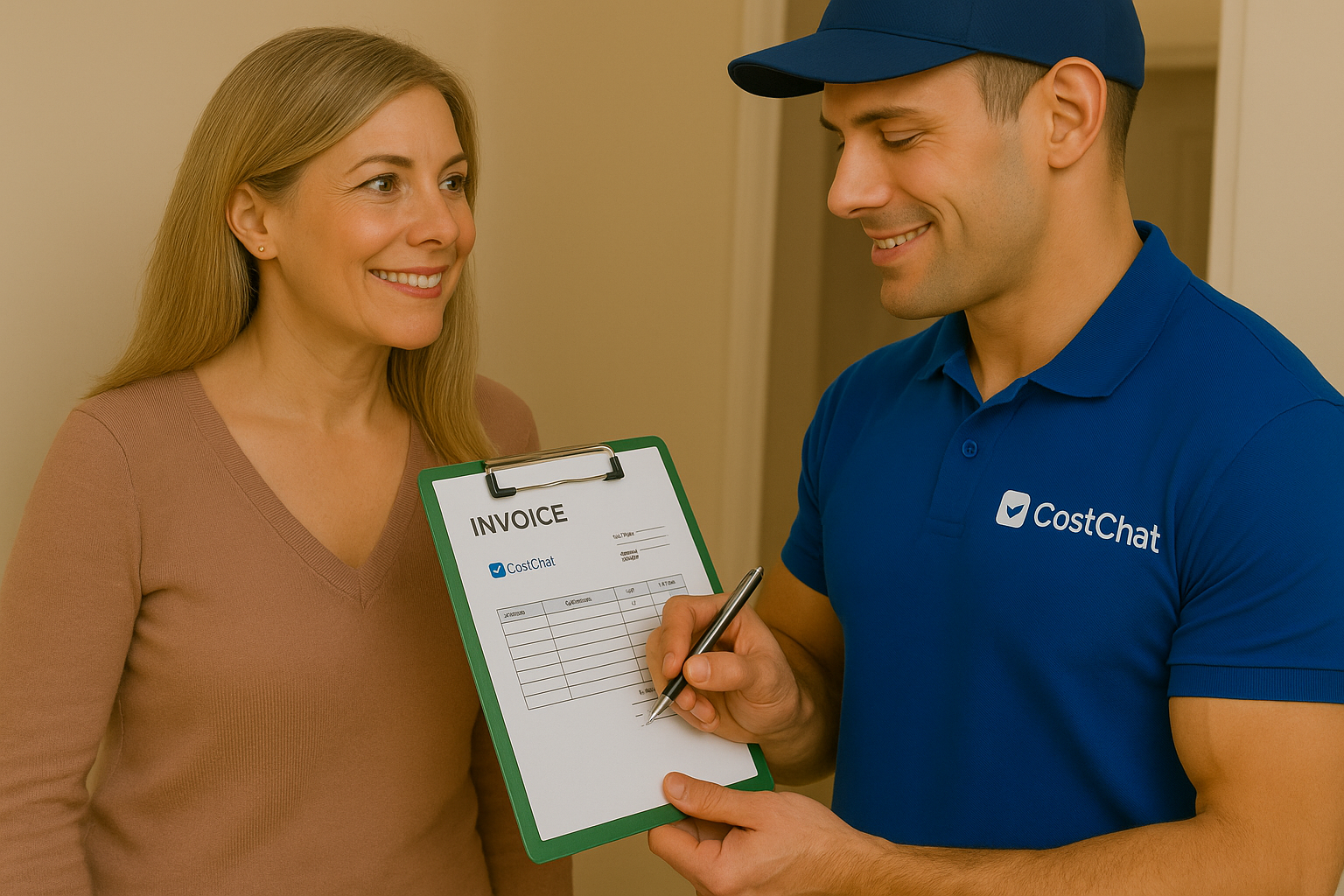
Find Top Local Emergency Plumbing Providers in Sioux Falls, SD – Book Today
How to Hire Top Rated Emergency Plumbing Pros in Sioux Falls, SD
Get a Free Online Estimate
Share your project details and receive a free online estimate from top-rated local pros. Not sure what it should cost? Check our Cost Guide.
Get EstimateCompare Local Quotes
View multiple free online quotes side by side. Use our Price Guide to understand labor rates, materials, and service fees before you hire.
Compare NowBook Best Top Rated Pros
Choose a licensed pro with confidence. Lock in your date after reviewing your free estimate and browsing our expert Cost Guide for peace of mind.
Book NowDid You Know?
74% ⚠️
of homeowners face surprise costs and delays — mostly from hiring unvetted pros. Don’t risk it. Hire trusted experts today.
Hire Top Rated & Verified ProsWork With Verified & Trusted Pros 🛡️
Save time, avoid costly mistakes, and experience reliable, top-quality service for every home project. Book now for priority scheduling and peace of mind.
Hire a Top Rated ProGet Instant Online Estimate of Emergency Plumbing in
🔎 CostChat Online Cost Estimator
Describe your project and location to get an instant estimate.
Emergency Plumbing in Sioux Falls, SD: Your Comprehensive Homeowner's Guide
Experiencing a plumbing emergency in Sioux Falls, SD, can be incredibly stressful, disrupting your home's comfort and peace of mind. Whether it's a sudden burst pipe during a frigid winter night or a persistent leak threatening your foundation, knowing how to respond swiftly and effectively is crucial. This guide is designed to equip Sioux Falls homeowners with the essential knowledge to navigate plumbing emergencies, understand local nuances, and make informed decisions for prompt and reliable solutions.
Table of Contents
- Sioux Falls, SD's Unique Emergency Plumbing Landscape: Why Local Expertise Matters
- Neighborhood Hotspots: Micro-Local Emergency Plumbing Risks & Solutions
- Common Problems & Triggers for a Professional Emergency Plumbing Call
- Navigating Sioux Falls, SD Regulations: Permits, Code & Professional Licensing
- Maximize Your Savings: Sioux Falls, SD Emergency Plumbing Rebates & Incentives
- Choosing Your Sioux Falls, SD Emergency Plumbing Service: Models, Sizing & Smart Features
- The Cost of Emergency Plumbing in Sioux Falls, SD
- Hiring Sioux Falls, SD's Top-Rated Emergency Plumbing Professional: Your Action Plan
- FAQs About Emergency Plumbing in Sioux Falls, SD
Sioux Falls, SD's Unique Emergency Plumbing Landscape: Why Local Expertise Matters
The Age & Character of Sioux Falls, SD Homes: A Emergency Plumbing-Related Time Capsule
Sioux Falls, with an estimated population of 215,000 residents across approximately 78 square miles, boasts a diverse housing stock. Much of our city’s housing was built in the mid-20th century and later, with common styles like ranch, split-level, and contemporary suburban designs found in neighborhoods such as McKennan, Highland, and Prairie Hills. Understanding the age of your home is critical for anticipating plumbing issues.
- Mid-20th Century Homes (approx. 1940s-1970s): Many homes from this era, prevalent in established neighborhoods, may still contain original galvanized steel pipes. These are highly susceptible to internal corrosion and mineral buildup, leading to reduced water pressure and leaks. Cast iron drain lines from this period are also prone to cracking and clogging.
- Late 20th Century Homes (approx. 1970s-1990s): While many homes from this period saw advancements, some may still have older materials or plumbing systems not adequately updated for modern water usage demands. Slab foundation homes common in Sioux Falls during this time can also hide leaks within the concrete, making detection and repair more complex.
- Early 21st Century Homes (approx. 2000s-Present): Newer constructions generally feature more robust materials like copper or PEX piping. However, rapid growth and home remodeling can still strain original plumbing if not properly integrated or updated to current codes.
Emergency Plumbing's Environmental & Utility Factors & Climate Impact on Your Plumbing
Sioux Falls' water quality and climate significantly influence plumbing systems.
- Water Quality: The City of Sioux Falls Water Division provides water sourced from the Big Sioux River and local aquifers. Sioux Falls water is generally classified as hard water. Hard water contains high levels of minerals like calcium and magnesium, which can lead to scale buildup over time in pipes, fixtures, and appliances. This buildup restricts water flow, reduces efficiency, and can eventually cause premature failure of plumbing components. The city conducts rigorous testing to ensure water safety, monitoring for contaminants.
- Climate Impact: Sioux Falls experiences a continental climate with harsh winters characterized by significant freeze-thaw cycles. Improperly insulated pipes, especially those in exterior walls, crawl spaces, or attics, are at high risk of freezing and bursting. This is a common emergency during our coldest months. Conversely, spring thaws and heavy rainfall can lead to ground saturation, potentially stressing underground pipes or causing issues with foundation drainage. Occasional summer droughts can also lead to soil contraction, similarly impacting underground systems.
 Request Quote
Request Quote
Neighborhood Hotspots: Micro-Local Emergency Plumbing Risks & Solutions
Sioux Falls' diverse neighborhoods present unique plumbing considerations due to age, construction, and location.
- Downtown & Older Neighborhoods (e.g., All Saints, Cathedral): Homes here often feature older infrastructure, including original galvanized or lead service lines and cast-iron sewer lines. Risks include frequent corrosion-related leaks, blockages, and potential lead contamination. Solutions often involve full repiping, sewer line replacement, and professional water quality testing.
- Mid-Century Neighborhoods (e.g., McKennan Park area): Many homes built in the mid-20th century have plumbing systems from that era. Risks include aging pipes prone to corrosion and potential foundation plumbing leaks, especially in slab homes. Solutions may involve targeted pipe repair, slab leak detection, and ensuring adequate insulation for exposed pipes.
- Suburban Developments (e.g., South Sioux Falls, East Sioux Falls): Newer homes generally have more modern plumbing. However, rapid development can sometimes lead to issues with newly installed systems or foundation settling. Risks can include improper installation, early-stage leaks, or foundation-related pipe stress. Solutions focus on prompt leak detection and professional installation verification.
Common Problems & Triggers for a Professional Emergency Plumbing Call
Recognizing the signs of a failing plumbing system can prevent minor issues from escalating into major emergencies. For plumbing components, the average lifespan can vary, but proactive maintenance is key.
- Low Water Pressure: Often caused by corrosion or mineral buildup within pipes, especially in older galvanized systems common in Sioux Falls homes. Leaks or partial blockages can also reduce pressure.
- Leaking Pipes or Fixtures: Gradual drips or visible leaks from pipes, faucets, or under sinks can indicate failing seals, corrosion, or joint issues. These are particularly concerning in slab foundations where leaks can go undetected for long periods.
- Running Toilets or Dripping Faucets: While seemingly minor, these waste significant water and can be symptoms of worn-out internal components or pressure imbalances.
- Slow Drains or Clogs: Common in any home, but frequent clogs in older cast iron drain lines can signal significant buildup or partial collapse.
- Water Heater Issues: Age-related sediment buildup, anode rod depletion, or tank corrosion can lead to leaks, lack of hot water, or even catastrophic tank failure. Average lifespans for water heaters are typically 8-12 years.
- Frozen Pipes: A critical emergency in Sioux Falls winters. Exposed pipes in unheated spaces are highly vulnerable.
Understanding these signs is crucial. For immediate guidance on handling a plumbing crisis, consult What to Do in a Plumbing Emergency. Identifying problems early can save you significant stress and expense. Familiarize yourself with the Warning Signs Your Plumbing Needs Attention.
 Request Quote
Request Quote
Navigating Sioux Falls, SD Regulations: Permits, Code & Professional Licensing
Ensuring your plumbing work meets safety standards is paramount. In Sioux Falls, adherence to local and state regulations is mandatory for all significant plumbing projects.
- Permitting Authority: Major plumbing work, including repiping, fixture installations, and water heater replacements, requires a permit issued by the Sioux Falls Development Services Center. You can find more information on their website: Sioux Falls Development Services Center.
- Governing Code: Sioux Falls adheres to the International Plumbing Code (IPC), with city-specific amendments to address local conditions and state regulations. These amendments ensure installations are safe, efficient, and compliant.
- Required Inspections: Depending on the scope of work, inspections may include rough-in inspections, final inspections, and specific fixture inspections. Your permit will detail the required inspection phases.
- DIY vs. Professional: While some minor repairs might be suitable for DIY enthusiasts, most plumbing work, especially involving gas lines, main water supply, or drain lines, should be handled by licensed professionals. This ensures code compliance, safety, and proper functionality, preventing costly mistakes. Learn more about when it's safe to go DIY at When to Consider DIY Plumbing.
- Contractor Licensing: All plumbing contractors working in South Dakota must be licensed. The South Dakota Department of Labor and Regulation oversees plumber licensing. You can verify a contractor's license status through their online portal: SD Department of Labor and Regulation Licensing. Always ask for proof of license and insurance before hiring.
Maximize Your Savings: Sioux Falls, SD Emergency Plumbing Rebates & Incentives
Investing in energy-efficient plumbing upgrades can lead to significant savings on your utility bills. Sioux Falls homeowners may be eligible for various rebates and incentives.
- Water-Saving Fixtures: Look for programs that offer rebates for installing WaterSense-certified toilets, showerheads, and faucets. These can reduce water consumption and lower your water bills.
- High-Efficiency Water Heaters: Incentives may be available for upgrading to ENERGY STAR certified tankless or high-efficiency tank water heaters. These not only save energy but also provide more consistent hot water.
- Leak Detection Systems: Some programs encourage the installation of smart leak detection systems, which can alert you to potential problems early, preventing water damage and waste.
- Utility Programs: Check with your local utility providers for any current or upcoming incentive programs. While specific offerings can change, resources like the City of Sioux Falls Water Division website may provide information.
Bonus Tip: Strategically time your plumbing upgrades to coincide with the rollout of new rebate programs or during seasonal promotions to maximize your savings.
For more ways to reduce costs, explore our Saving Tips for Plumbing Services.
 Request Quote
Request Quote
Choosing Your Sioux Falls, SD Emergency Plumbing Service: Models, Sizing & Smart Features
When addressing plumbing issues or planning upgrades, selecting the right type of service and components is crucial for long-term performance and efficiency in Sioux Falls.
- Water Heaters:
- Tank Water Heaters: Common and affordable, but can lose energy through standby heat loss. Sizing depends on household demand; for Sioux Falls homes, a 40-50 gallon tank is typical for a 3-4 person household.
- Tankless Water Heaters: More energy-efficient as they heat water on demand, reducing standby losses. Ideal for larger homes or those with high hot water usage, though initial cost is higher.
- Piping Materials:
- Copper: Durable and reliable but more expensive and labor-intensive to install.
- PEX: Flexible, less expensive, and resistant to freezing and corrosion, making it a popular choice for new installations and renovations in Sioux Falls.
- Fixtures: Consider low-flow toilets and showerheads to conserve water, especially given Sioux Falls' hard water, which can exacerbate mineral buildup in standard fixtures.
- Sump Pumps & Backflow Prevention: For homes in areas prone to flooding or with basements, a reliable sump pump is essential. Backflow prevention devices are critical for protecting your potable water supply from contamination, especially if you have irrigation systems or other cross-connection risks.
- Key Sioux Falls Considerations:
- Hard Water: Choose fixtures and water heaters with features that mitigate scale buildup or be prepared for regular descaling maintenance.
- Freeze Protection: Ensure all exposed plumbing is adequately insulated to withstand harsh Sioux Falls winters.
- Slab Foundations: Be aware of the potential for hidden leaks and opt for reputable leak detection services if you suspect issues.
The Cost of Emergency Plumbing in Sioux Falls, SD
Understanding the potential costs associated with emergency plumbing services in Sioux Falls, SD, can help you prepare and make informed decisions. Costs can vary significantly based on the nature of the emergency, the time of day, the materials required, and the complexity of the repair.
- Service Call Fee: Expect a base service call fee, which often covers the technician's visit and diagnostic assessment. This can range from $75 to $150.
- Hourly Rates: For repairs that extend beyond an initial assessment, hourly rates typically fall between $100 and $200 per hour for licensed plumbers.
- Emergency Surcharges: Services performed outside standard business hours (evenings, weekends, holidays) often incur an emergency surcharge, potentially adding 1.5x to 2x the standard rate.
- Common Job Estimates:
- Leaky Faucet Repair: $100 - $250
- Toilet Repair: $120 - $300
- Water Heater Repair: $300 - $800
- Burst Pipe Repair: $300 - $1,000+ (depending on complexity and pipe material)
- Sewer Line Clog/Repair: $500 - $2,000+
- Slab Leak Repair: $1,000 - $4,000+
- Factors Influencing Cost:
- Pipe Material: Repairs on older galvanized steel or lead pipes can be more complex and costly than on modern PEX or copper.
- Accessibility: Plumbing located in difficult-to-reach areas (e.g., behind walls, under concrete slabs) will increase labor costs.
- Urgency: The need for immediate service outside business hours significantly impacts the price.
- Neighborhood: While less common, some service providers might adjust pricing based on travel distance or perceived value in specific affluent areas.
These figures are estimates. It is always recommended to obtain multiple detailed quotes from qualified professionals before authorizing any work. For assistance with understanding costs, check out Saving Tips for Plumbing Services.
 Request Quote
Request Quote
Hiring Sioux Falls, SD's Top-Rated Emergency Plumbing Professional: Your Action Plan
Choosing the right plumbing professional is critical for ensuring your emergency is handled efficiently, safely, and correctly. Follow these steps to find the best local expert.
- Verify Licensing and Insurance: Ensure the plumber is licensed by the State of South Dakota and carries liability insurance. This protects you from financial responsibility for accidents or shoddy workmanship. You can verify licenses via the SD Department of Labor and Regulation.
- Check Local Reviews and Reputation: Look for plumbers with a strong track record in Sioux Falls. Online reviews, testimonials, and ask for references from neighbors or local community groups.
- Ask Hyper-Local Questions:
- "Have you worked on homes with slab foundations in the McKennan Park area before?"
- "What are the common issues you see with plumbing in homes built in the 1960s in Sioux Falls?"
- "How do you handle potential pipe corrosion from Sioux Falls' hard water?"
- "Are your technicians familiar with the Sioux Falls plumbing code amendments?"
- Get Multiple Detailed Quotes: Don't settle for the first quote. Obtain at least three detailed estimates that clearly outline the scope of work, materials, labor costs, and any potential additional fees.
- Understand the Contract: Always ensure you have a written contract that specifies the work to be done, the total cost, the timeline, warranty information, and payment terms.
- Avoid Common Mistakes: Be wary of unusually low bids, pressure tactics, or professionals who are unwilling to provide written estimates or proof of licensing and insurance. Familiarize yourself with Mistakes to Avoid When Hiring a Plumber.
Neighborhoods We Serve in Sioux Falls, SD
️ Top Neighborhoods:
- Downtown
- Hospital & University District
- South Sioux Falls
- Southwest Sioux Falls
- East Sioux Falls
- All Saints
- Cathedral
- Galway Park
- Garfield
- McKennan Park
- Oak View
- Pepper Ridge
- Pettigrew Heights
- Terrace Park
- Tuthill Park
- Whittier
- Canton
Top ZIP Codes Covered:
- 57101
- 57103
- 57104
- 57105
- 57106
- 57107
- 57108
- 57109
- 57110
- 57117
Wherever you’re located in Sioux Falls, SD, our team of trusted local pros is nearby—ready to deliver fast, reliable, and top-rated service. Whether you’re in the heart of downtown or a quiet suburb, we’ve got you covered.
